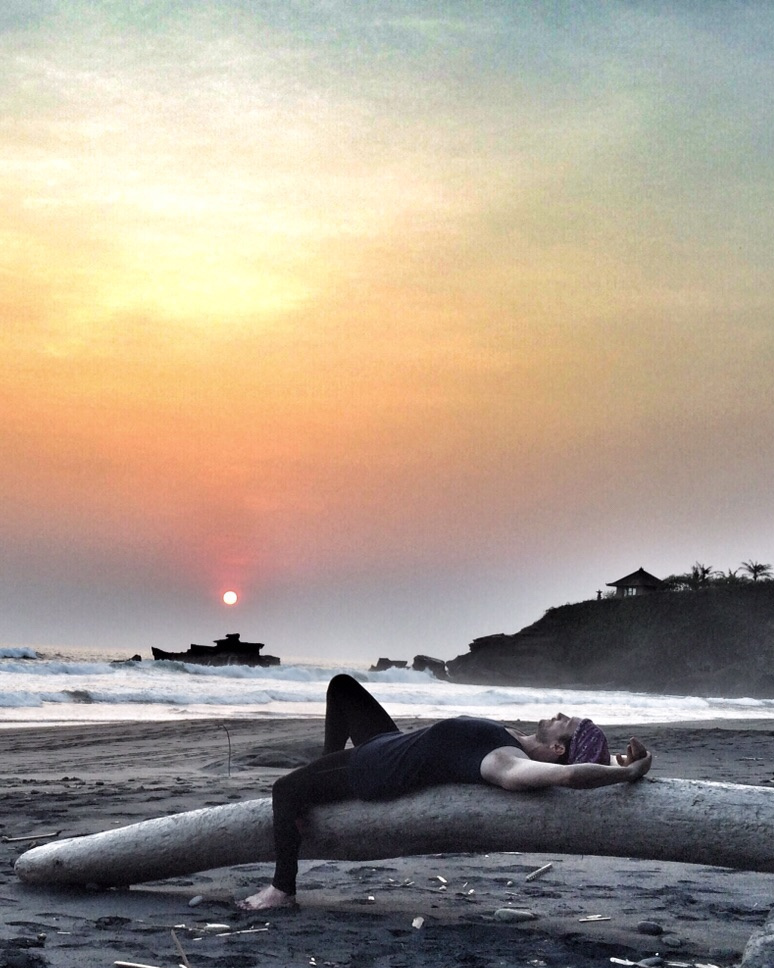
Three Years Ago, TodayDavid Rush |
2018-10-16
I’ve written about dharma a fair bit, and to be honest, I’m probably going to keep writing about it, because it is a topic that just doesn’t quite fit into the usual English words used to translate it. In Hindu thought, dharma is what holds things together. For a nation it is the way we treat our symbols, our laws, rules, and social conventions. For a family, dharma is manifest through the roles we play and rituals we celebrate. For the individual, dharma is usually viewed as “purpose”.
But there’s a big problem with that definition: it can’t even talk to any of the other definitions because it stands all alone. Dharma might also be translated as “righteousness”, which at least gives reference to the society in which the individual finds herself, but its a bit moralistic, with puritan and fundamentalist overtones that don’t fit well with many aspects of tantric thought.
So I had been wrestling with these ideas for years before I started teaching yoga, tediously questioning international teachers who just used the word to convey a inner sense of worth and meaning to their students. And then, three years ago from today, I started my teacher training with Meghan Currie and Rachel Wainwright. Not to use a cliché or anything, but it really did change my life.

Now one purpose of asana practice is to liberate stuck energy, and it is an important part of teacher training, too. This leads to all kinds of emotional drama for pretty much everyone involved, but for me it broke through into physical manifestation in relatively surprising ways. In short, things around me started to break. The week before it started, while I was in Singapore, my laptop more-or-less died. I blew up my shoulder while assisting someone in handstand. That far, and it just seemed like the usual, inconvenient, way that life sometimes gets awkward. Then a brick wall fell on my head. Yes, it was an entire wall, and it didn’t just fall on my head: I was half-buried by it. I spent a half-day getting stitches, and then when we went out to the beach for a group formation exercise, I pretty well bashed up my big toe on a rock that was invisible in the twilight. The next day, I got out my guitar to relax a bit and found that the headstock was broken.
Having the guitar broken was when my composure finally broke. I’ve been playing since my teens, and hauled guitars all over the world. They’ve been my friend in lonely times and my voice when words failed. After having a bit of a cry, I picked myself back up off the floor and had a short talk with Rachel. She listened patiently and commented “Sometimes when I am out of alignment, I find things breaking all around me, too.” I was gobsmacked, in part because while it sounded like it should make sense in a “shit yogis say” kind of way, but I had no idea what she was talking about. I’ve actually been thinking about it a lot over the last three years. And as I have begun to pull away the veils of the subtle body, I feel like I have begun to grok it.
The idea is quite simple really. It’s a lot like working on alignment through asana, but acting through the subtle body changes the way we perceive this “alignment.” For example, when you work towards trikonasana (triangle pose), unless you have an extraordinary body, there is a period where you know you’re getting more-or-less the right shape, but it doesn’t really feel very good. And so you patiently continue until the day comes when all the bits work just right and this good feeling of openness and rightness settles down in the body and you know that is what all the cues have been about.
The inner alignment to which Rachel referred works the same way, but in this case we need to bring together our actions, attention, feelings, and thoughts into alignment with the koshas (layers) of our being that are beyond what the rational mind can reach on its own. It’s hard to understand, but it certainly can be felt. Most things start to work well and we begin to flow through what seem to be miraculously orchestrated moments. Even the difficulties that show up in life feel like they are the right problems.

Obviously this presents a problem for the rational mind. How can we know when we are in alignment. Again it is much the same as with asana: we choose to do a thing, practice and fall down, get up and try again; all the while paying close attention to every sensation, feeling, and thought. Out of it all we develop a gestalt of what direction our inner wisdom (vijnamaya kosha) and bliss (anandamaya kosha) would lead us. These last two make up what many in the yoga community would call our personal dharma.
The other kinds of dharma amount to external clues that give us a framework for evolving our sense of this inner alignment. The social roles we play do not define us, but they provide us a stage on which we demonstrate our inner light. We see this in the Puranas, Hindu tales of the divine play of aufust personages. When Vishnu manifest as Krishna, he was bound by the curse on the Yadava family to never become king. Even so, Vishnu’s inner wisdom about the ordering of society drove Krishna to become king-maker and change the destiny of many kingdoms.
So to return back to the present moment, when Facebook remided me that three years had passed from the day I began my teacher training, I couldn’t help but reflect on how different everything feels now. On the surface, not much has changed in the circumstances of my life, but inwardly everything feels different. All the layers of my life seem to sing together in harmony rather than competing to be heard. And that produces an undercurrent of feelings of well-being, which surely helps when trouble does come up. It’s not a permanent transition, but just like asana, patient practice makes it grow easier, day by day.
Om Shanti
This document was translated from LATEX by HEVEA.